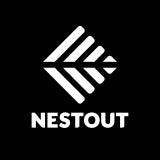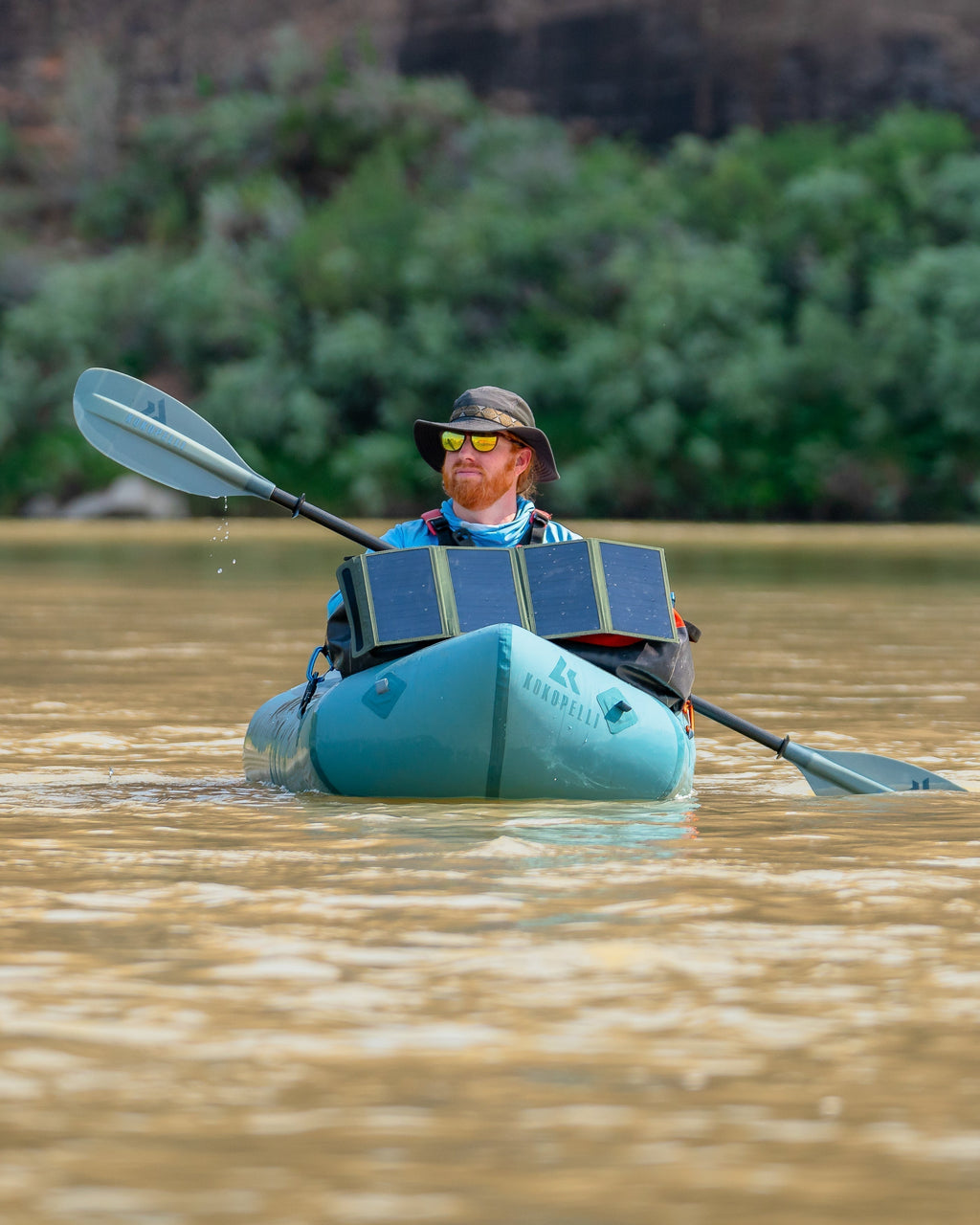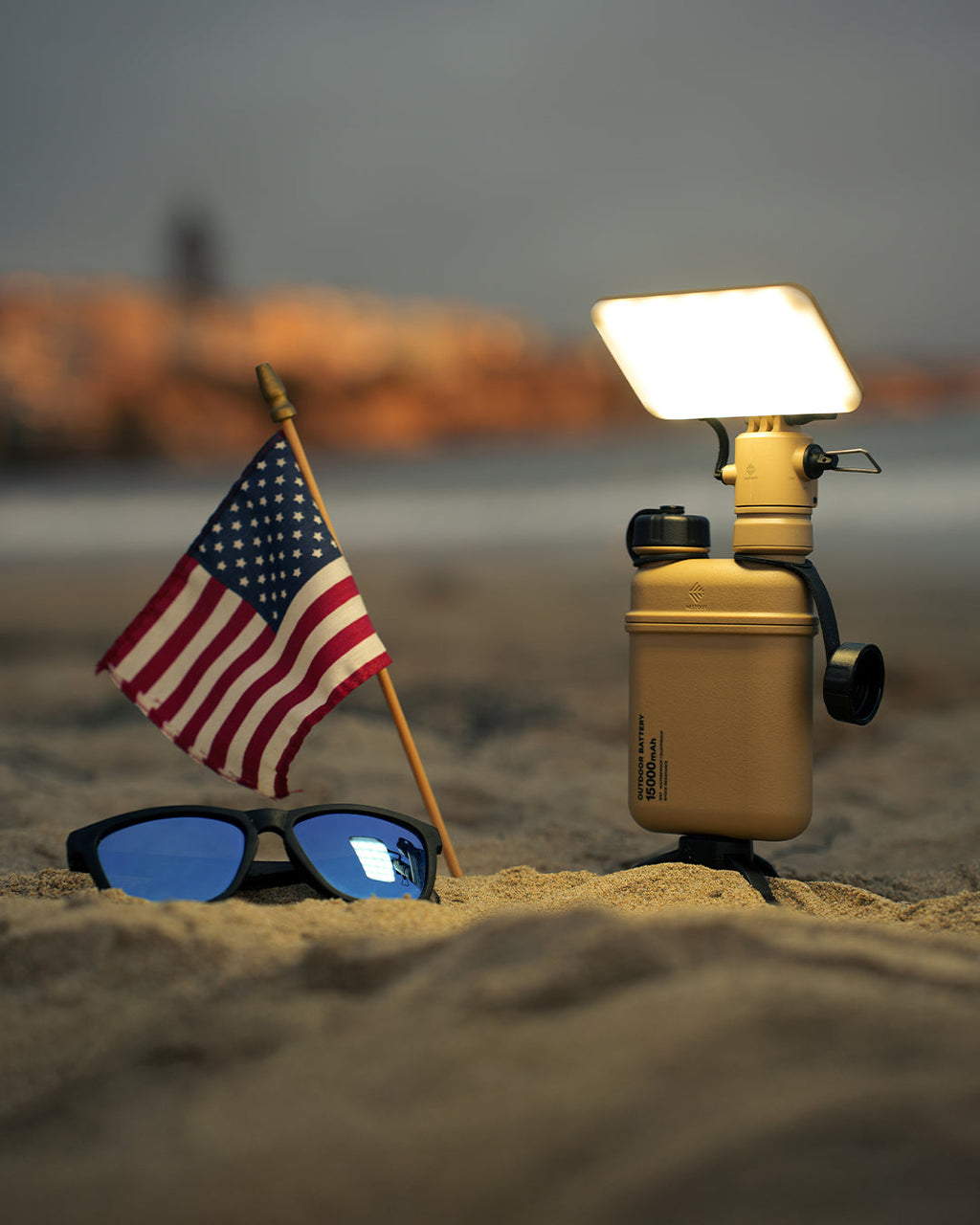How to Organize Hiking Gear for Maximum Efficiency
When it comes to hiking, success starts with preparation—and that means keeping your gear organized. Whether you're setting out for a half-day hike or a multi-day trek, how you store and pack your gear makes a massive difference in your comfort, safety, and efficiency. A well-organized setup helps you get out the door faster, carry less weight, and extend the life of your gear. It also helps eliminate the last-minute scramble that can lead to forgotten essentials.

In this guide, you'll learn what to pack for your next hiking adventure, how to pack it efficiently, and the best ways to organize it both on the trail and at home. Plus, we'll show you how NESTOUT's rugged and modular gear can take the guesswork out of your hiking setup.
Essential Hiking Gear Checklist
Navigation and Communication
Every outdoor adventure starts with knowing where you're going and how to get back.
-
Physical maps and a compass (never rely solely on digital tools)
-
GPS device or smartphone with offline maps
-
Emergency beacon or satellite communicator (for backcountry routes)
 NESTOUT Pick: Trekking Hybrid Case for iPhone 16 and 16 Pro. This rugged case is made for the outdoors. With built-in 360º One-Snap Mount compatibility and durable, drop-resistant housing, it keeps your smartphone protected and accessible—so you stay connected even in rough terrain.
NESTOUT Pick: Trekking Hybrid Case for iPhone 16 and 16 Pro. This rugged case is made for the outdoors. With built-in 360º One-Snap Mount compatibility and durable, drop-resistant housing, it keeps your smartphone protected and accessible—so you stay connected even in rough terrain.
Emergency and Safety Gear
No matter how short or familiar the trail, always bring a compact emergency kit.
-
First aid kit with blister care, antiseptics, and pain relievers
-
Multi-tool or lightweight knife
-
Emergency whistle, flashlight, and firestarter

NESTOUT Pick: 3-in-1 Whistle Light A compact safety essential that combines a whistle, flashlight, and compass into one weatherproof tool. Clip it to your pack or jacket for instant access in an emergency.
Clothing and Weather Protection
Layers are key to regulating your body temperature as conditions change.
-
Moisture-wicking base layer (synthetic or merino wool)
-
Insulating mid-layer (fleece or light down)
-
Waterproof outer shell (jacket and pants)
-
Sun hat, beanie, gloves, and UV-protection sunglasses
Pack smart—expect changes in weather and temperatures even on short hikes.
Food and Water Supplies
Staying fueled and hydrated is critical, especially in remote areas.
-
Trail mix, energy bars, dehydrated meals
-
Water bottles or hydration bladder (aim for 2L minimum)
-
Water filtration system or purification tablets
Pro tip: Store your snacks where they're easily accessible to avoid unnecessary stops.
Shelter and Sleep Systems
If you're heading out for an overnight hike or just like to be prepared, don’t forget:
-
Lightweight backpacking tent or bivy sack
-
Sleeping pad and sleeping bag suited to the temperature range
-
Emergency space blanket or tarp
How to Pack Your Hiking Backpack Efficiently
An overloaded or poorly packed backpack can make even the easiest trail feel like a slog. Follow this approach to streamline your load:
-
Bottom of Pack: Bulky, non-essential items (sleeping bag, extra clothes)
-
Middle of Pack: Heavy gear like stove, food, water (close to your spine)
-
Top of Pack: Items you need during the hike (jacket, first aid, headlamp)
-
External Pockets: Map, sunscreen, snacks, whistle, multitool
Keep essential items within reach and distribute weight evenly to avoid strain.
Tips for Organizing Your Gear Efficiently
Organization doesn’t stop at packing, every trip is smoother when you know exactly where everything is.
-
Label Gear: Use tape or waterproof tags on containers and dry bags
-
Use Packing Cubes or Sacks: Separate categories like first aid, food, electronics
-
Designate Spaces: Store things in the same place every time to build habit

Modular gear like NESTOUT's power banks and solar panels clip together and integrate with your setup, helping reduce clutter and simplify your loadout.
Organizing Your Outdoor Gear at Home
Staying organized at home makes trip prep faster and easier. Here’s how to keep your gear tidy and ready to go:
-
Shelves or bins: Sort items by category (sleeping, cooking, safety)
-
Hooks and hangers: Dry and store tents, jackets, and bags without damage
-
Maintenance checklist: Check gear after each trip and restock supplies
-
Grab-and-go kits: Keep pre-packed dry bags for first aid, tools, and lighting
Pro tip: Use transparent bins and a label maker to streamline your packing process.
Benefits of Modular and Rugged Gear
For modern explorers, gear that adapts is non-negotiable. Here's why modular design matters:
-
Durability: Withstands drops, weather, and wear from heavy use
-
Efficiency: Snap-together features save space and simplify setup
-
Flexibility: Attach components to your pack, bike, or tent with ease

NESTOUT’s ecosystem—including power banks, lights, solar panels, and smartphone cases—is built to work together, so you can customize your kit without clutter.
Your trail is calling. Pack smart, gear up, and stay organized with NESTOUT.




Leave a comment
All comments are moderated before being published.